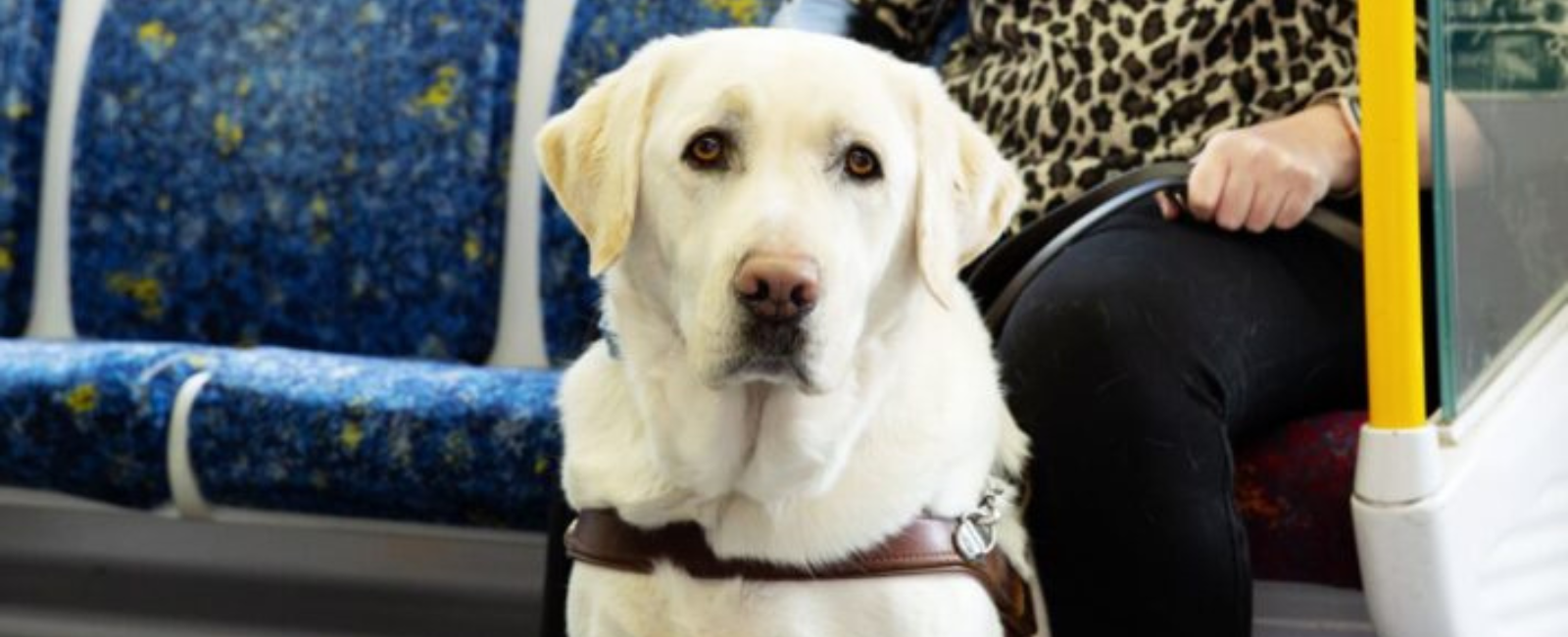
Have you ever seen some of our four-legged friends stroll through the terminal with their owners and wondered which dogs are able to visit Brisbane Airport?
Brisbane Airport welcomes all service animals and certified therapy dogs with their handlers.
Are you unsure if your furry friend qualifies for these requirements, or curious about the difference between the roles of these dogs?
Keep reading to break down the difference between assistance, guide, and therapy dogs, and what you need to know if you’re travelling with – or encountering – these canine companions.

Assistance dogs
Assistance dogs are specially trained to support individuals with physical and mental disabilities. These remarkable dogs perform essential tasks like opening doors, retrieving items, providing calming body pressure during stressful moments, alert barking in emergencies, and countless other actions that are necessary for the owners’ safety. Because these are working dogs, as opposed to pets, assistance animals are granted access to all public spaces, including areas where other dogs are typically not permitted.
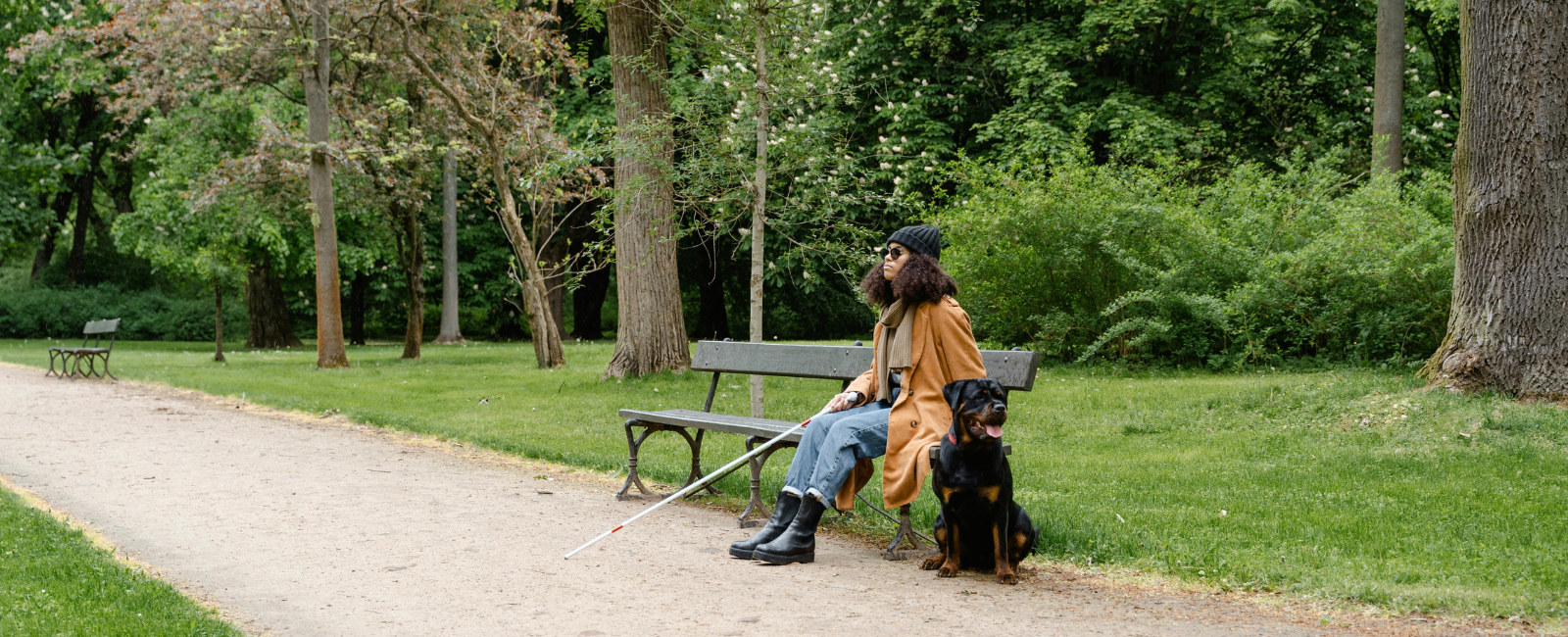
Guide dogs
Guide dogs, also referred to as seeing-eye dogs are specifically trained to assist people with visual impairments. They help their handlers navigate safely through various environments, providing life-changing support and enabling greater independence and access to spaces that might otherwise be dangerous or challenging to move through.
Like other assistance animals, guide dogs are permitted in all public areas, inside and out of Brisbane Airport.
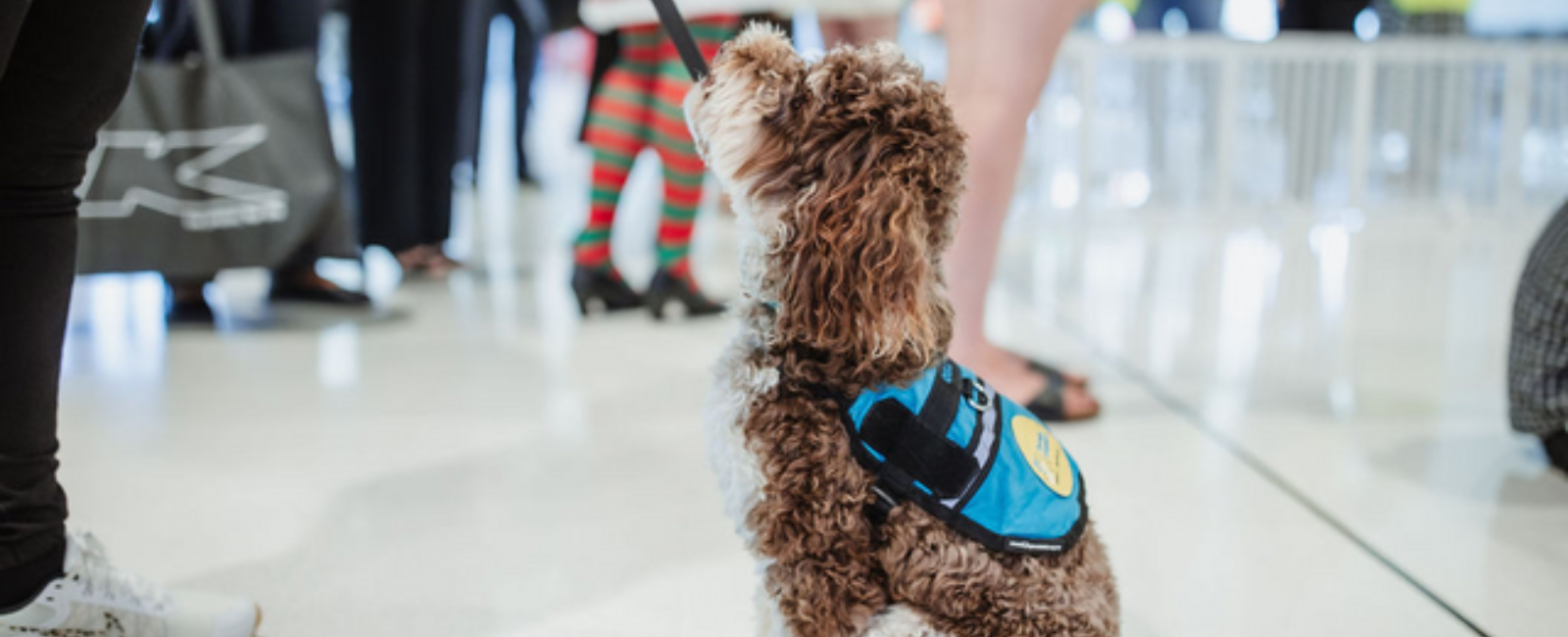
Therapy dogs
Therapy dogs are your pre-flight pals that you might find around Brisbane Airport with their team of handlers from Therapy and Support Animals Australia. While not classified as service or working dogs, therapy dogs are still specifically trained to be a calming and warming presence to those they encounter. They play a valuable role in enhancing the Brisbane Airport travel experience for many passengers. Whether you’re an anxious flyer or just need a friendly face (and a wagging tail), these fluffy friends provide emotional support and help create positive interactions during your journey.
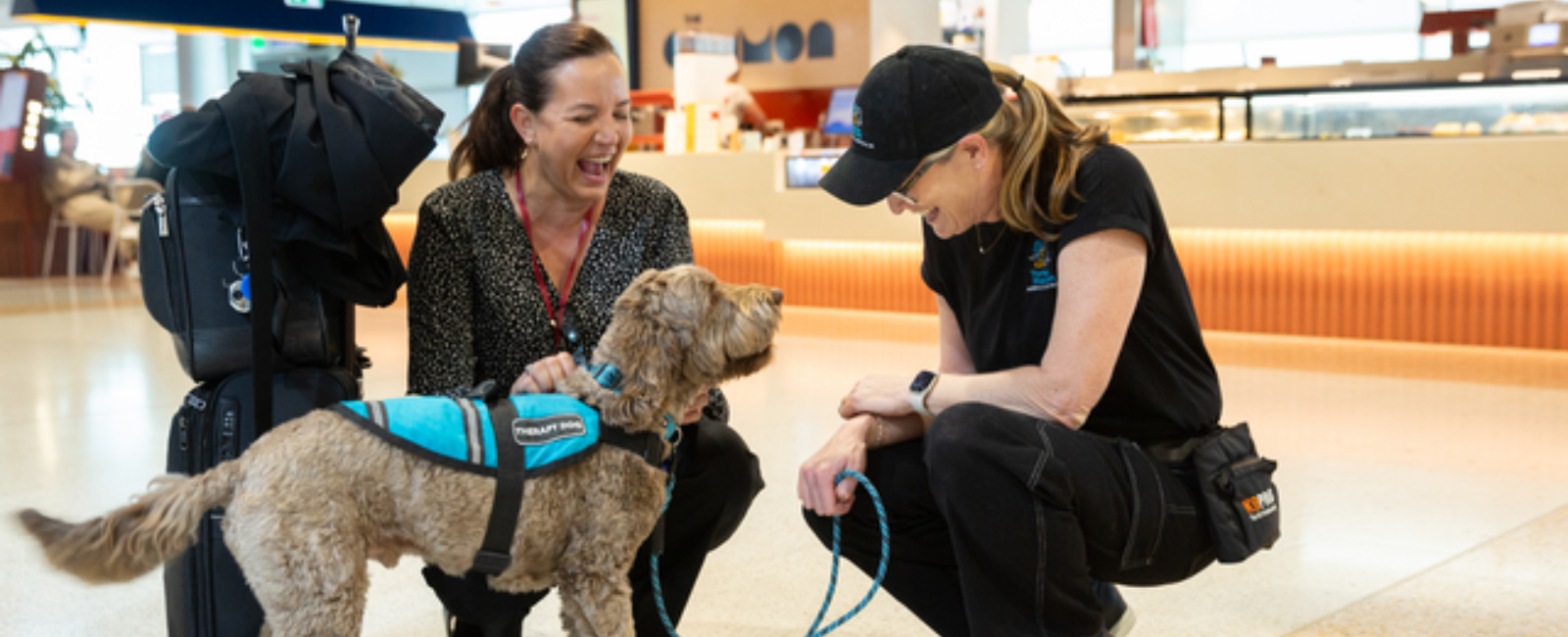
How can you tell if a dog is an assistance, guide, or therapy dog?
Assistance, guide, and therapy dogs will be recognisable within Brisbane Airport. Apart from being the only dogs allowed in the terminals, they will also be wearing identifiable vests, harnesses, or other forms of identification associated with their respective organisations. This helps alert others that they are on duty and serving important roles.
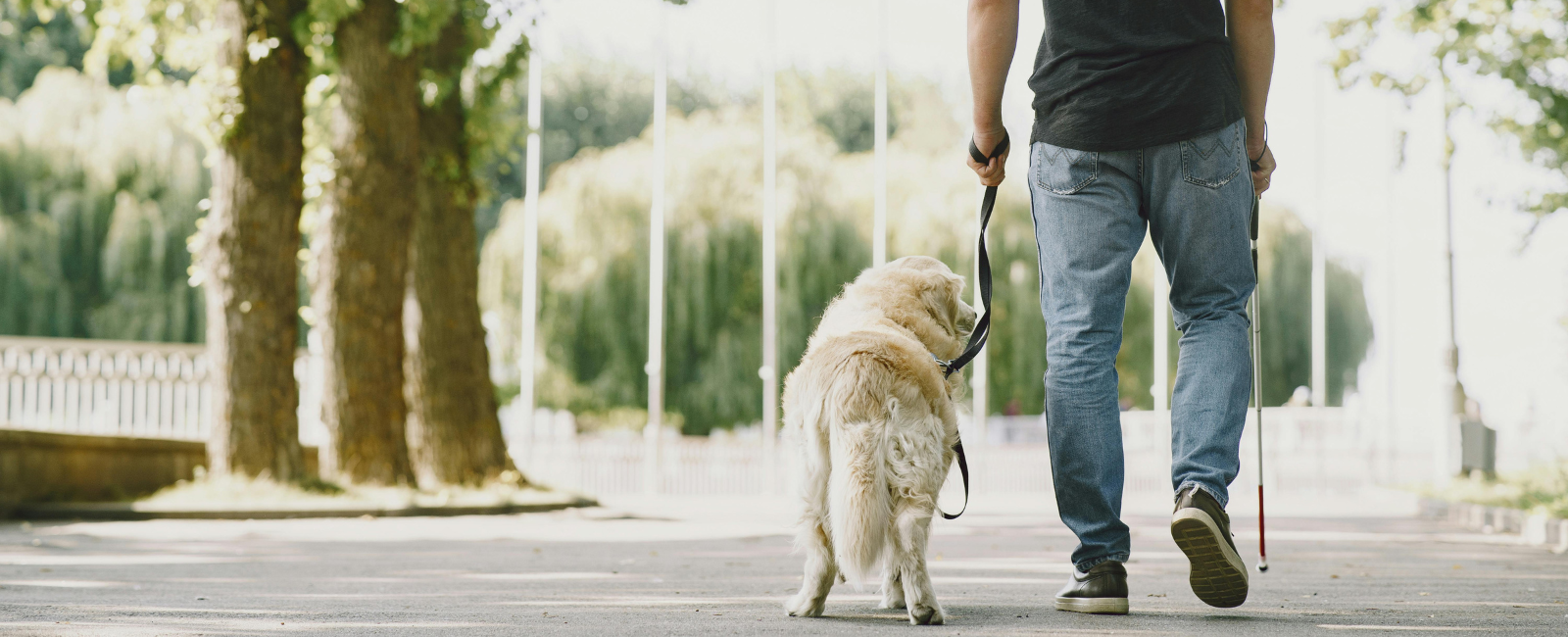
How to act around assistance and guide dogs:
Though it can be tempting to pat or interact with an assistance or guide dog, it’s important to remember these animals are working and should not be distracted. For the safety of both the dog and its handler, refrain from touching, talking to, feeding, or commanding the dog while it’s wearing its harness or vest. Allowing service dogs to focus on their tasks is crucial for the owner’s safety and the dog’s effectiveness.
Service dogs and their owners have the right of way in public spaces, and it’s essential to respect their role by giving them the space they need to perform their duties effectively.

How to act around therapy dogs:
Brisbane Airport’s therapy dogs from Therapy and Support Animals Australia are for all passengers’ benefit. Because they aren’t servicing a specific person, feel free to play and cuddle to your heart’s desire – although please always ask the handlers if it is okay for you to interact with the dogs first. These dogs are meant to provide comfort for anyone in need, so respecting the handler’s guidance ensures that everyone can benefit from their presence.
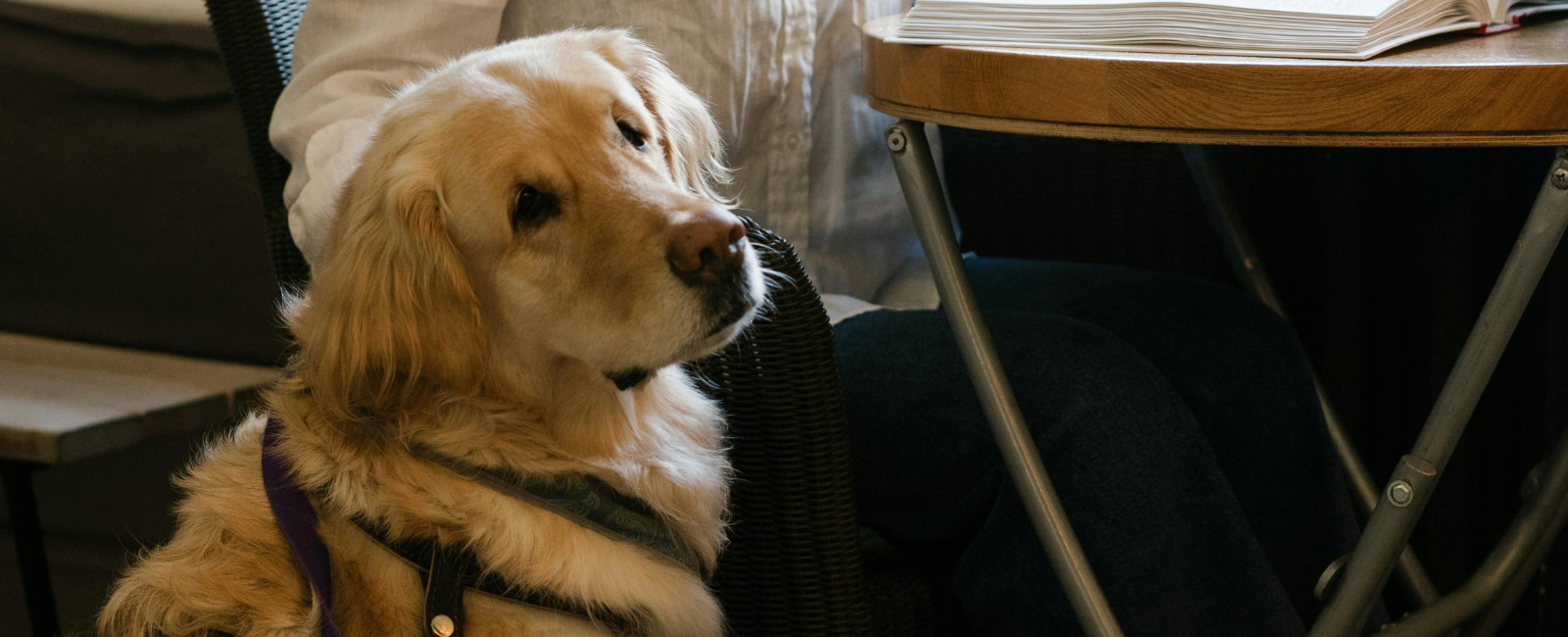
How do I fly with my assistance or guide dog?
Anyone who relies on an assistance or guide dog for safety or health reasons are welcome to travel with their service dog in the cabin. Always be sure to inform your airline when booking your flight so they can accommodate this. Keep in mind, Brisbane Airport requires that all assistance and guide dogs undergo security screening, which may involve a pat-down or use of a hand-held magnetic wand to search the dog and their lead, collar, and harness.
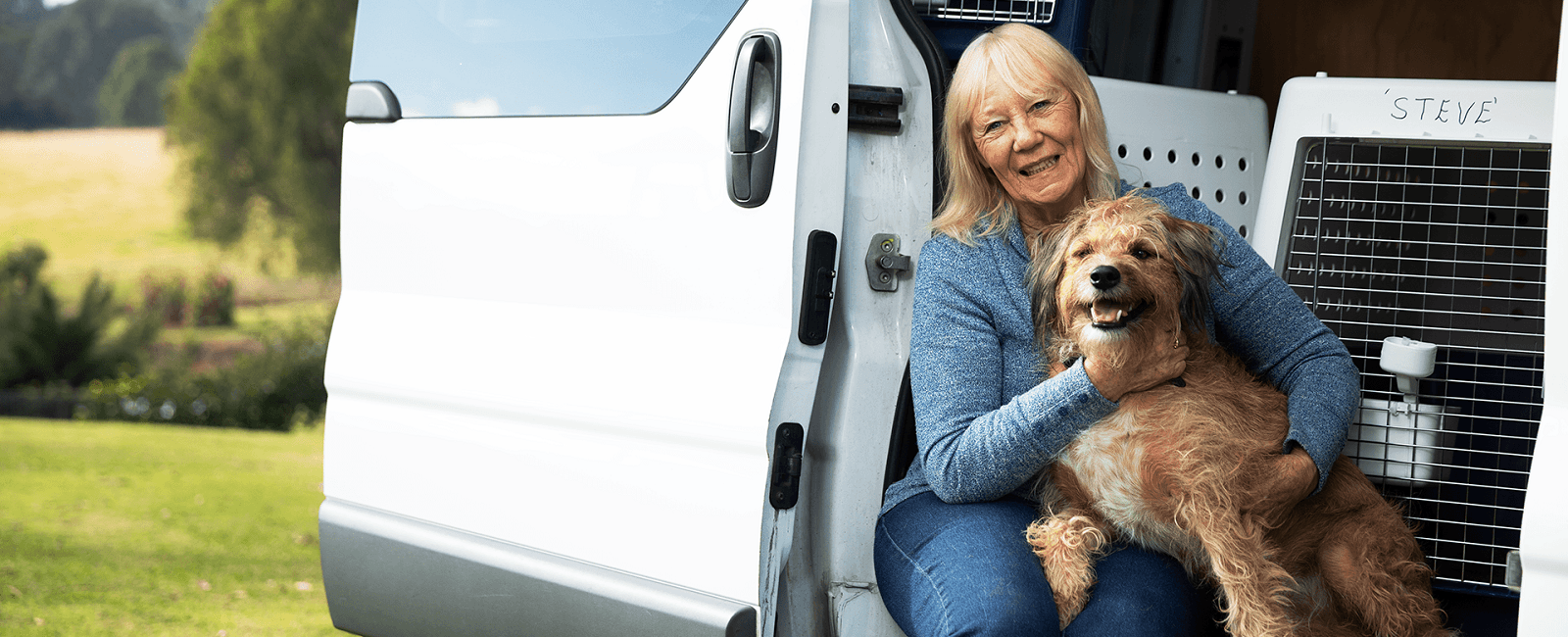
What about your family pet?
As much as we understand how hard it is to part with the four-legged member of your family while you travel, only assistance and guide dogs are allowed to roam the airport with their owners. If your dog doesn’t fall into one of these categories, it may still take to the skies through the airline’s specific pet travel procedures (often as cargo or freight), but they are not able to enter the terminal like their working canine-companions.
Are you wanting to bring your dog or other pet to the terminal to meet and greet your loved ones at the airport? We suggest keeping them in the car with you as you do a drive by pick up, utilising the pick-up and drop-off zones, as non-working dogs are not allowed in the terminals at all. If you’re wanting to meet travellers at the gate or anywhere inside the airport terminals, we suggest leaving the furry welcome for a pawty at home.

Furry friend facilities:
Working dogs need breaks just like us! Special toilet and watering facilities for assistance animals can be found in both the International and Domestic Terminals.
Domestic Terminal - Level 2, Central Terminal area (near Gate 25)
International Terminal - Level 3, Departures area (after Passport Control)

